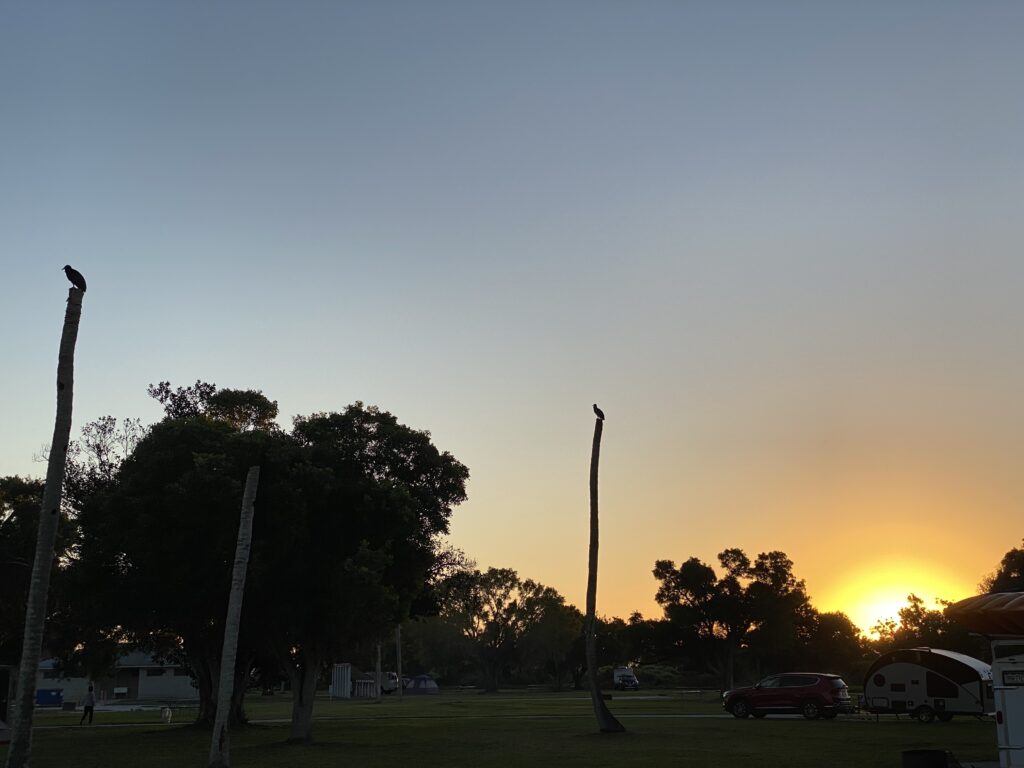
The southernmost outpost of Everglades National Park is Flamingo, where marine, marsh, mangrove and coastal prairie ecosystems collide. It’s a place where eyes see wild, ears hear menace and the hardiest explorer’s physical and mental wits are put to test. About half of the campground never recovered from Hurricane Irma. The other half is hanging on by a thread.
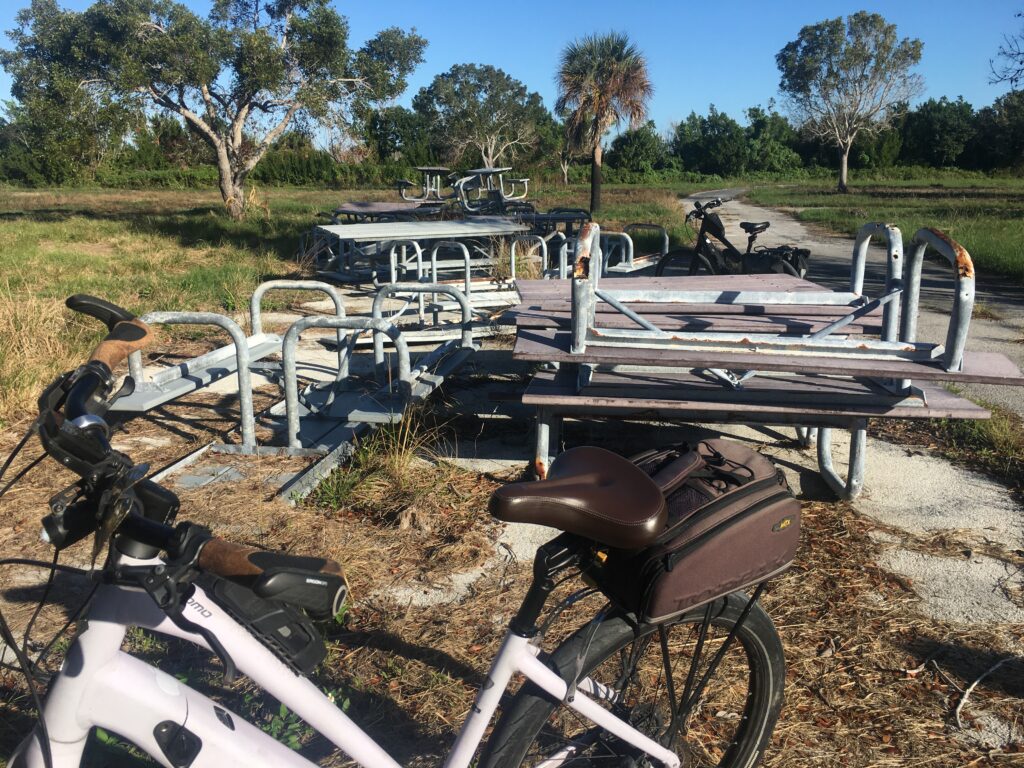
Flamingo Campground
We planned four days at Flamingo Campground, enough time to bike and hike the 40 or so miles of backcountry trails along with a ranger led canoe trip on Nile Mile Pond. We’d skip the commercial pontoon boat tour to experience the Everglades au nat-ur-al.
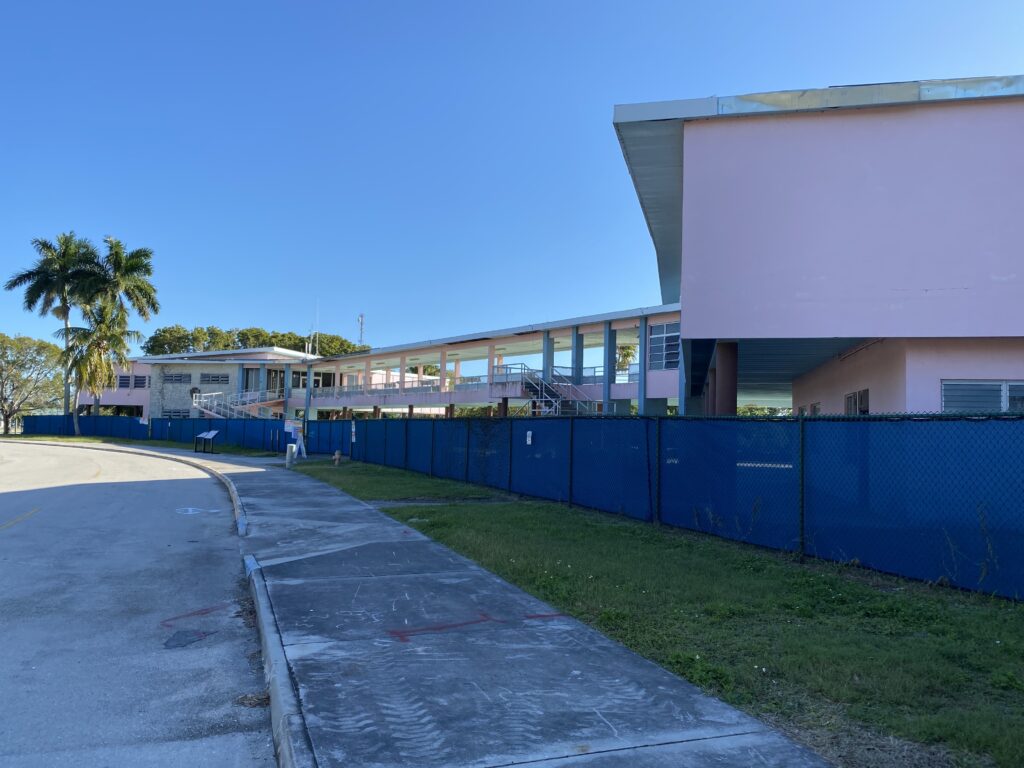
Hurricane Recovery in Progress
Flamingo is run by concessionaires and the National Park Service operates the Visitor Center out of a small dark trailer in front of a once vibrant mid century reminder of yesteryear. There used to be 250 campsites and 65 cabins in its heyday, but a hurricane ravaged destination with dwindling attendance leaves about 100 sites on two loops and a dozen or so non-electric, shared bathhouse EcoTents renting for a whopping $150 a night.
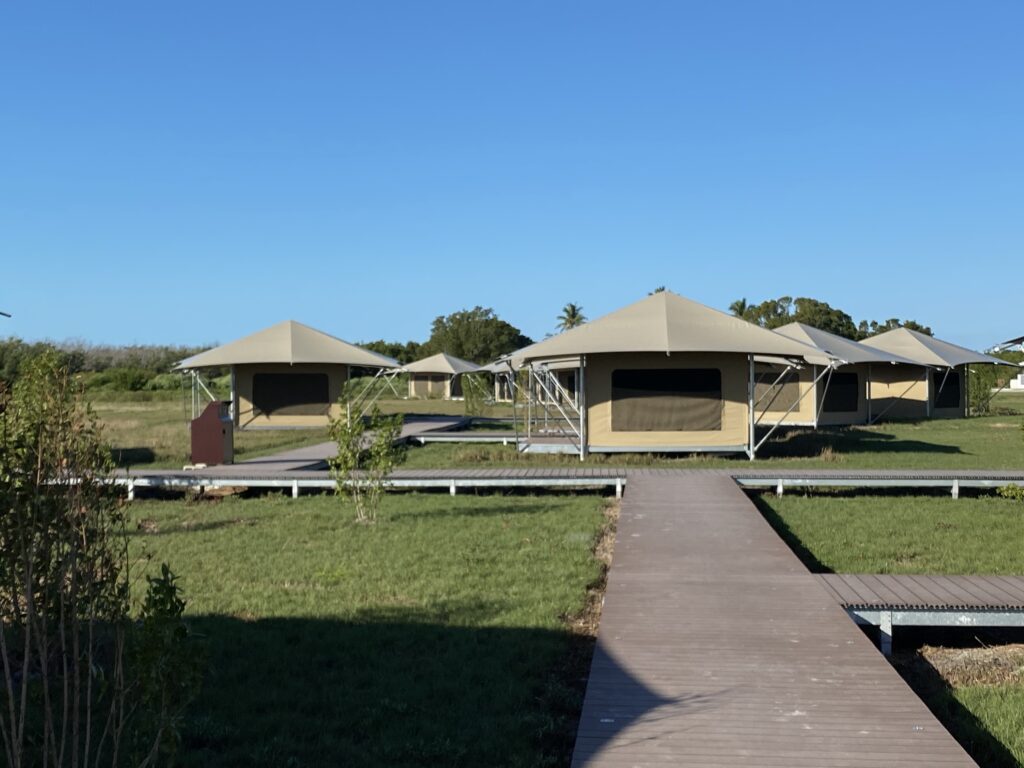
Camptown
We settled into Site 26, under a coconut palm, next to the bathhouse, across from Spanish Moss and woodpecker condo-trees. The wind was up, the sun shining and the bathhouse equipped with solar showers and an electric outlet to serve as our bike charging station. One of about two dozen campers, we created our comfy spread and prepped for the evening’s dinner in eager anticipation of our first shower in 3 days. As evening approached, the sun set behind us and that’s when the madness began.
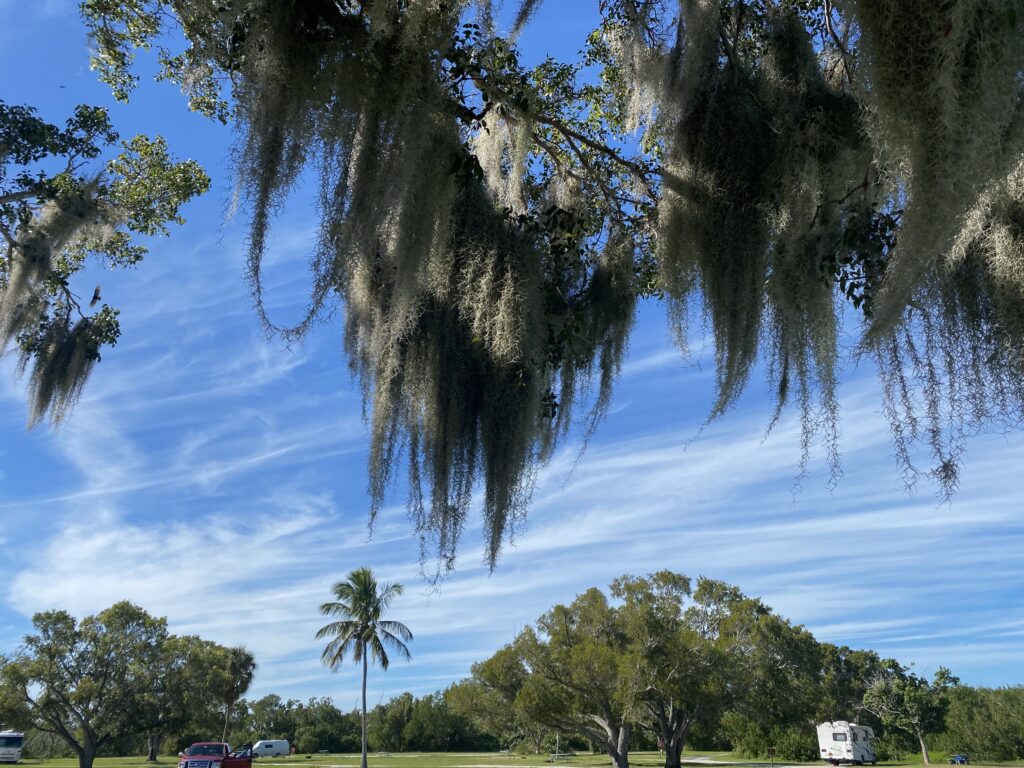
One buzz on the right ear, then louder on the left. A bite on the wrist then one through the Levi’s on the inside left leg. We knew mosquitos would be an issue, so we came prepared … deet sprays, deet towelettes, don’t bug me mosquito butter from the Yupper, Gnat Away from Minnesota, No Gnatz from Florida and the trusted no seeum certified jacket and hood with face cover from Grand Island Michigan. There was no amount of repellent to dissuade these vampire parasites.
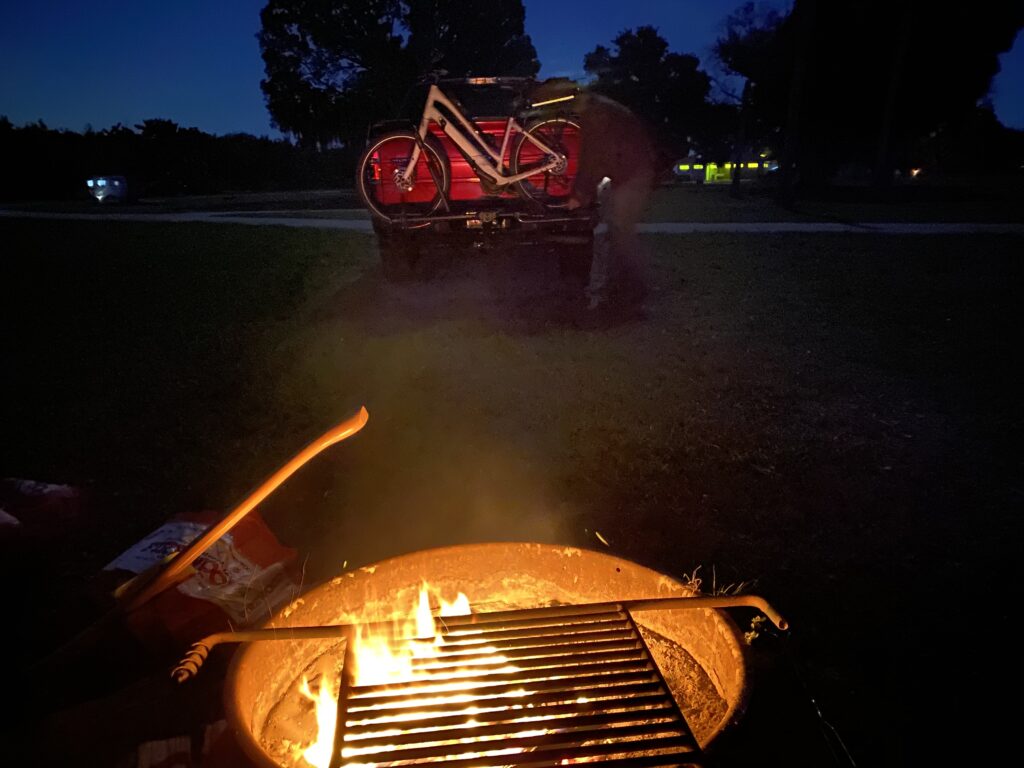
They Only Come Out at Night
When darkness falls and you’re trying to cook dinner or relax in your tent, they stealth strike without warning. They hide in the places you are most vulnerable … your sleeping bag, the toilet stall, the shower with the clogged drain. They’ll get you fully clothed or naked and afraid. The kamikazes signal their attack, with an ear piercing buzz that reverberates in your brain. This is, literally, the worst mosquito situation either of us has faced. We lasted 2 ½ days longer than most everyone else. When we finally evacuated, there were 4 RVs, a Scamp trailer and one cargo van. The other tenters were nowhere to be found.
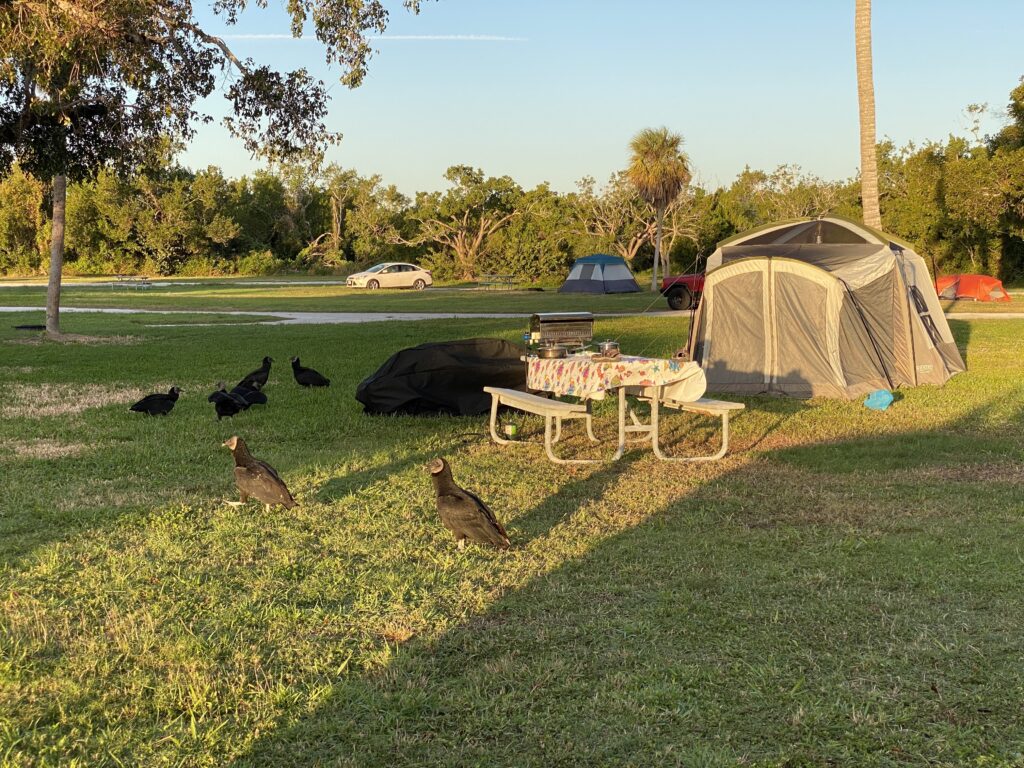
When we escaped to the truck cab to eat breakfast one morning, the turkey vultures descended on camp. Behind our backs, they tore through trash and grocery bags, wasting no time invading the kitchen, hunting for food. Living is an aggressive battle for food at Flamingo for all living things.
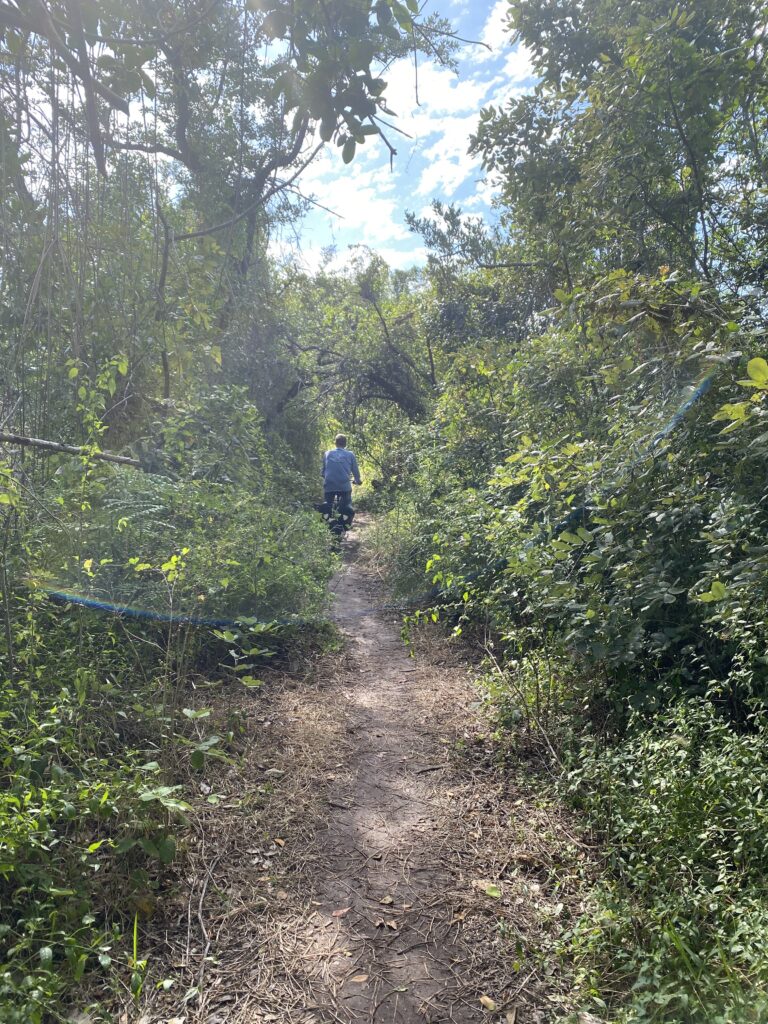
Overgrown Trails
In those 2 ½ days we biked the 4 mile Snake Bight trail – what the everglades map calls a “tropical hardwood hammock” and we call “the jungle,” plus the 8 mile bike/hike Bear Lake Trail, which the map calls “dense hardwood hammock mixed with mangroves,” and we call “swamp jungle.” Both were severely overgrown and choked with what we later found out to be Poison Wood trees. While we saw a few spoonbills and white pelicans, the only evidence of a pink flamingo was here.
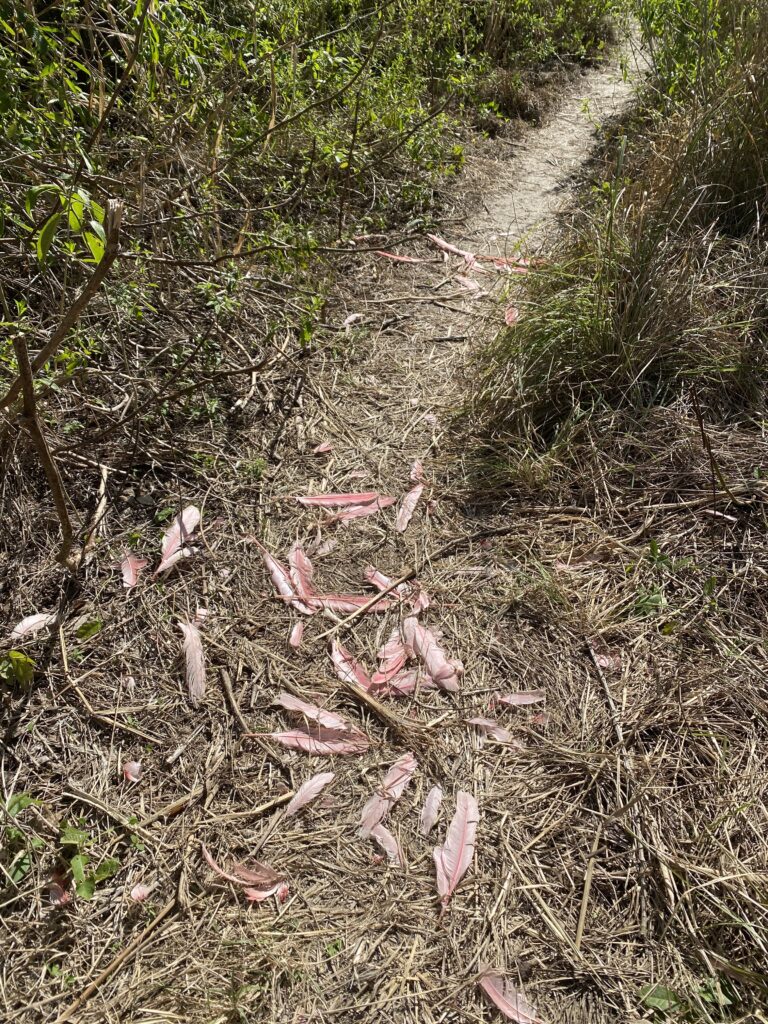
We abandoned the 12 mile Coastal Prairie and Bayshore Loops trails when attacked by a squadron of kamikazie skeeters. Rowdy Bend was closed and Christian Point joined Snake Bite which left the one mile Guy Bradley, a paved shortcut from the Campground to the Visitor Center.
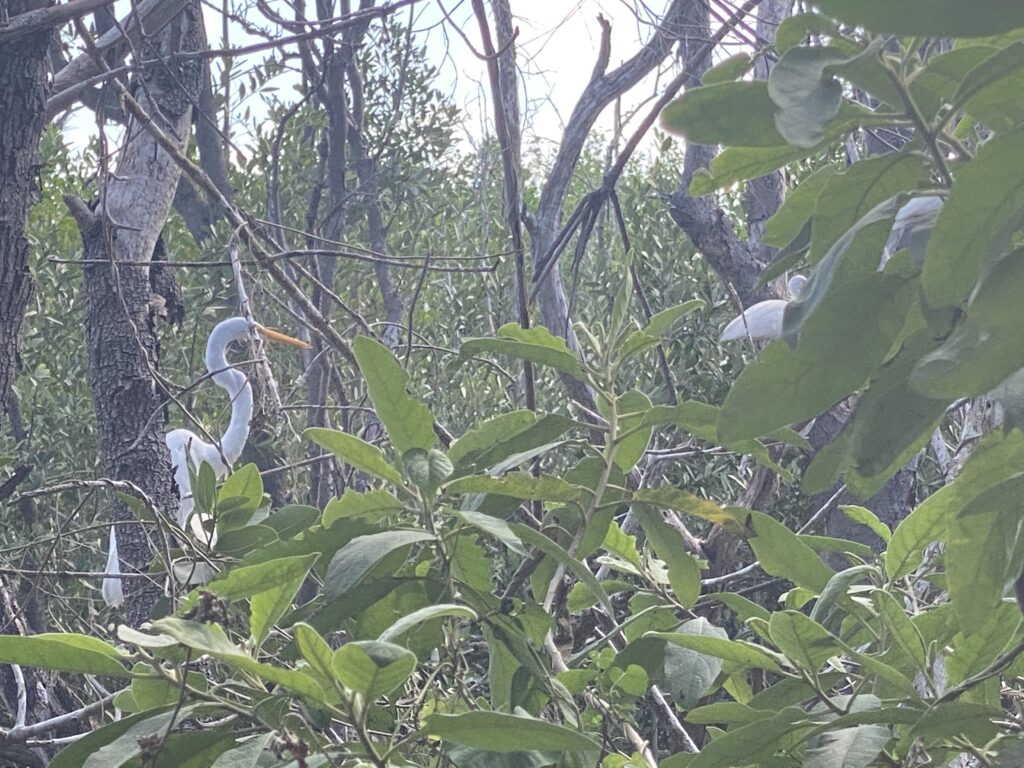
Mosquito Madness
Flamingo is not “on the way” to anywhere. It is the absolute end of the park road. Most visitors hit the northern hikes and campgrounds. A few who need to use a boat ramp, visit Flamingo. A lesser few camp there. Go to Flamingo if you want bragging rights to living in tough conditions. While the cold showers were a step up from Midway, the insects were relentless. We continually crossed fellow volunteer rangers and campers whom we had seen at Flamingo. The conversation starter was always “how long did you last?” Nursing our bites and rashes we could answer 3 days which was usually two more than them. The struggle is real.
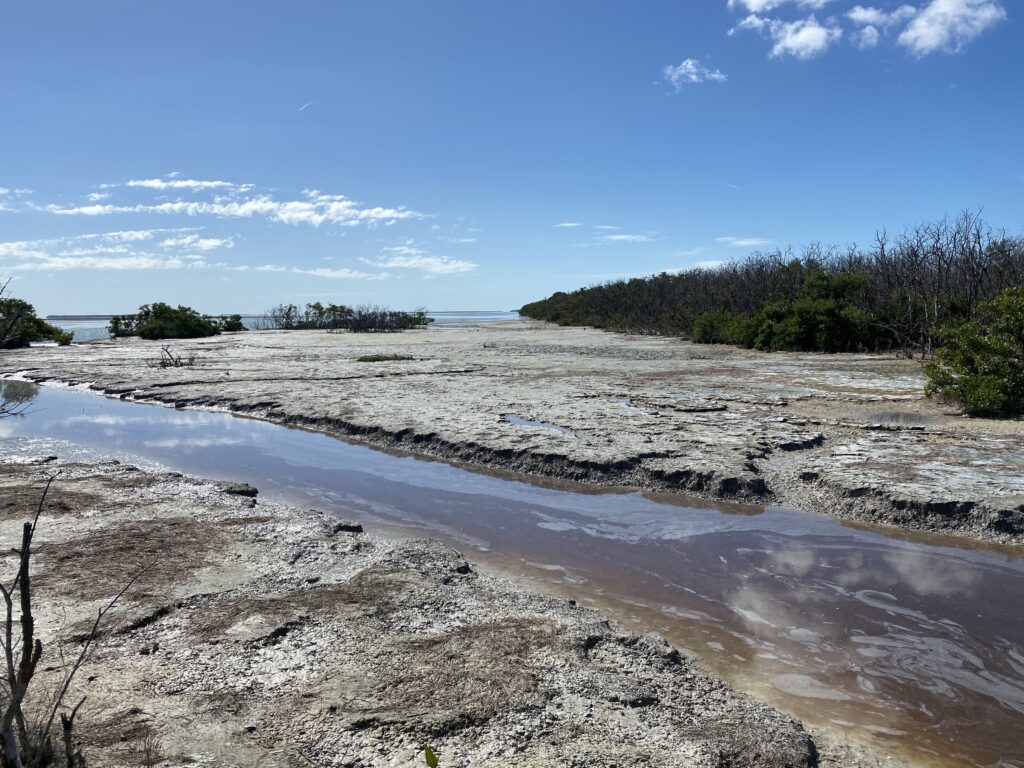
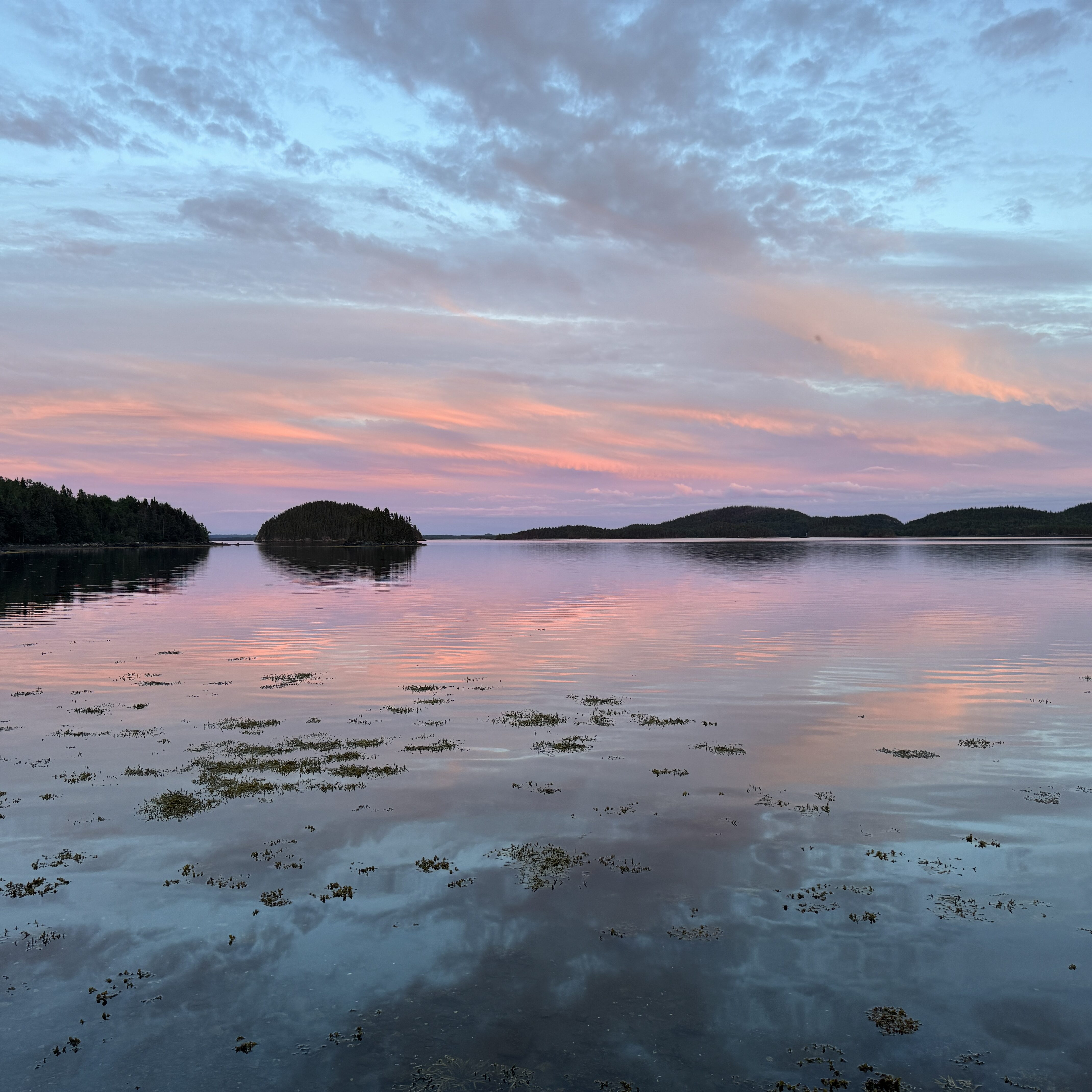
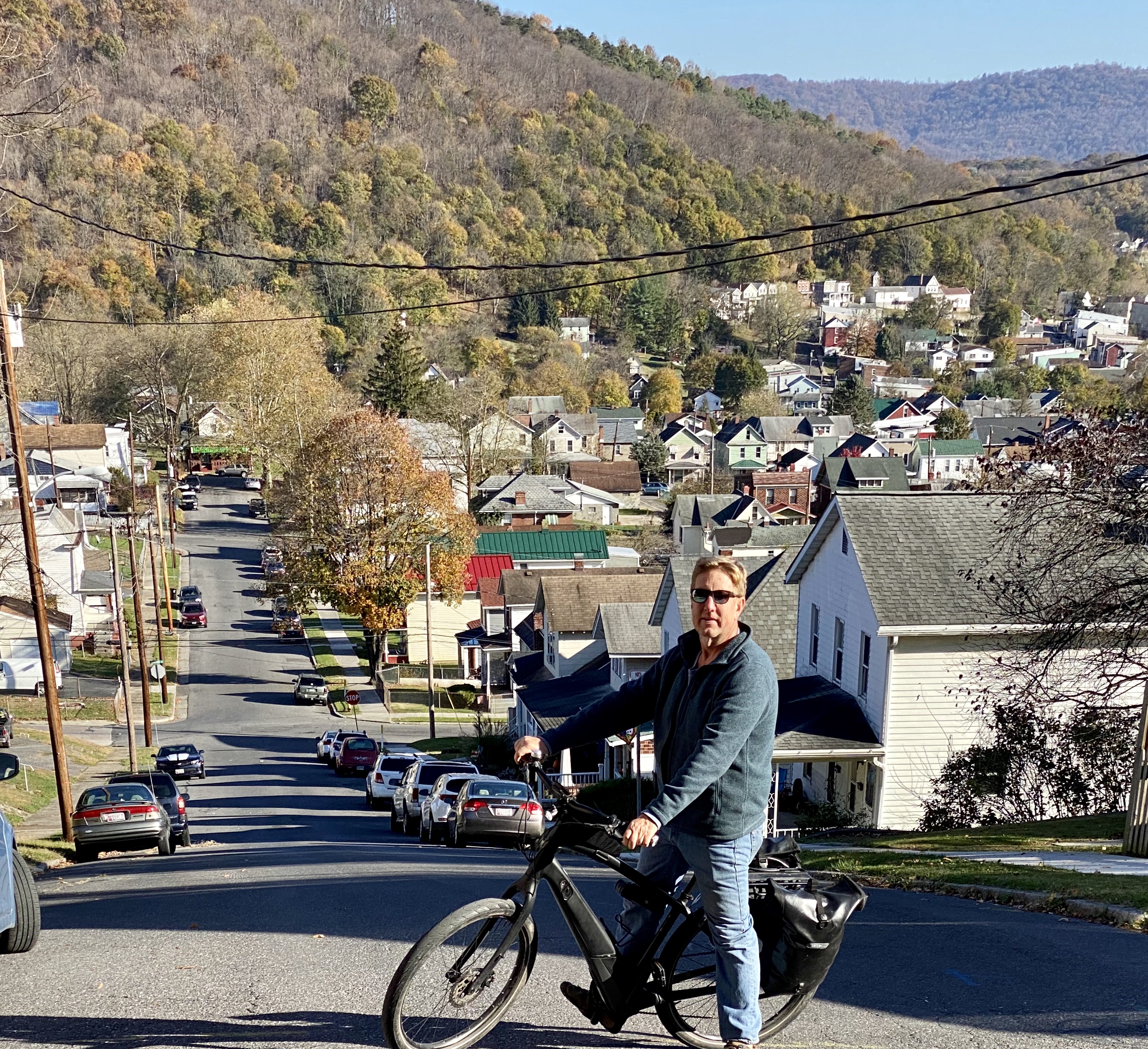
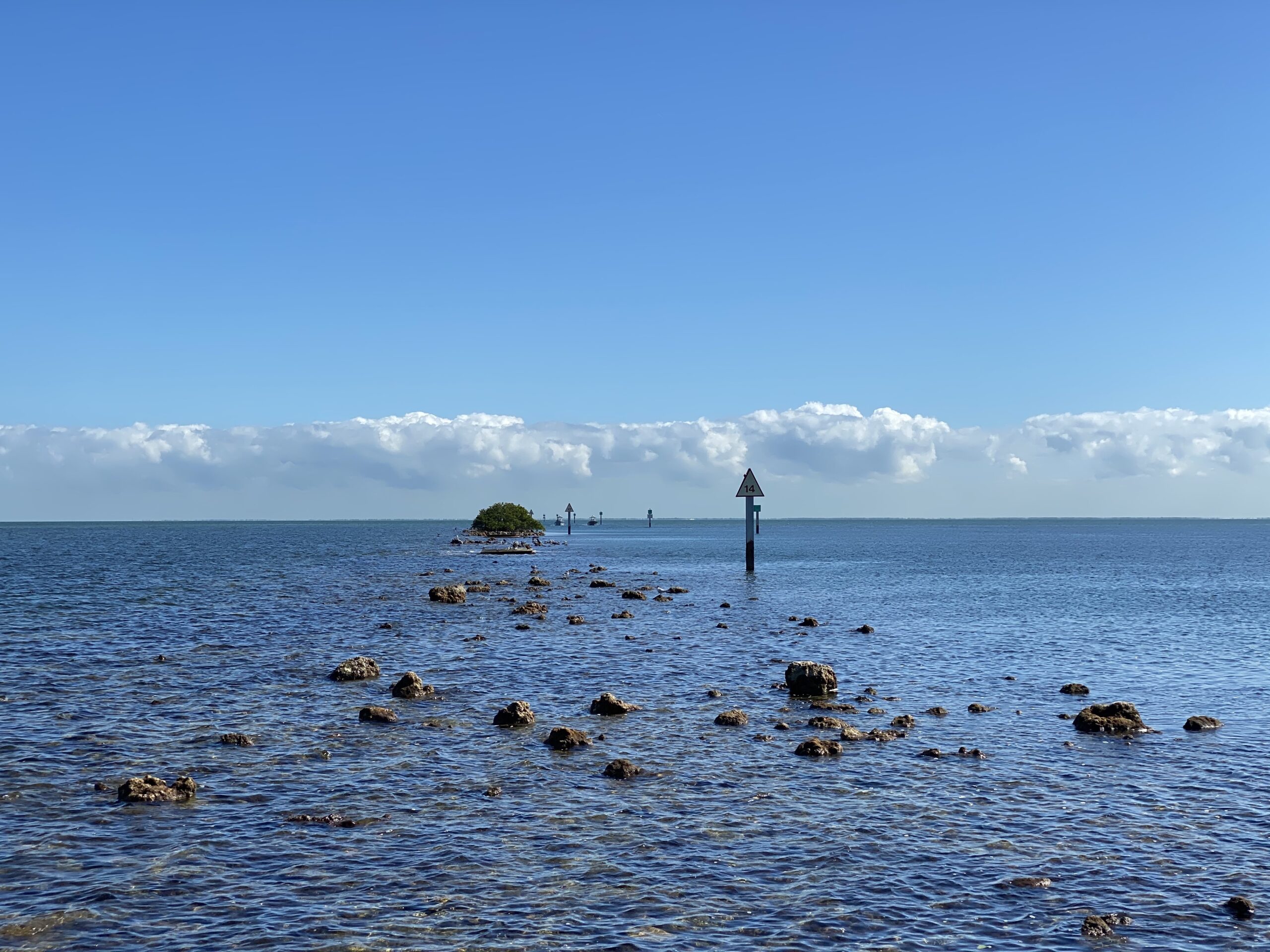
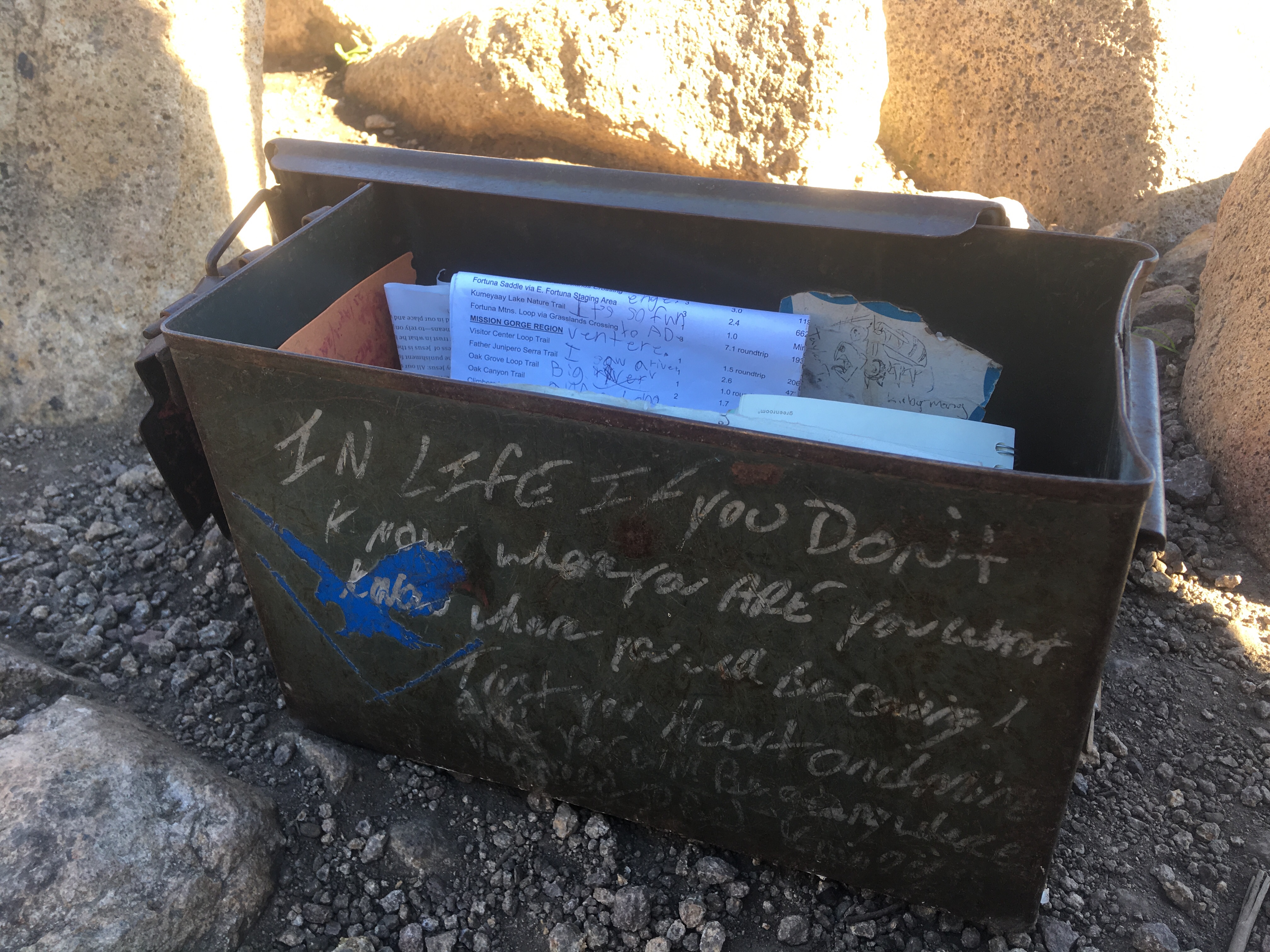
Undedered and intripid. Still you make the Everglades a “must see” adventure.